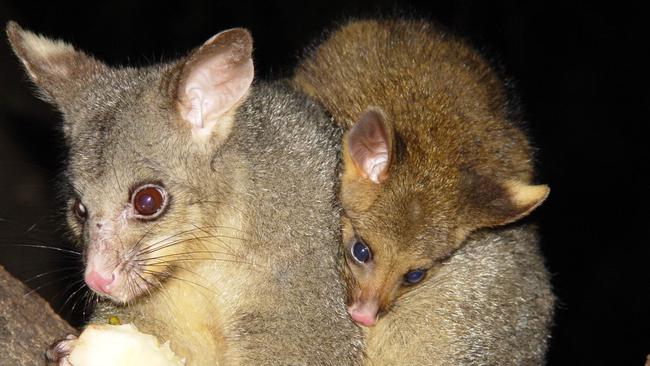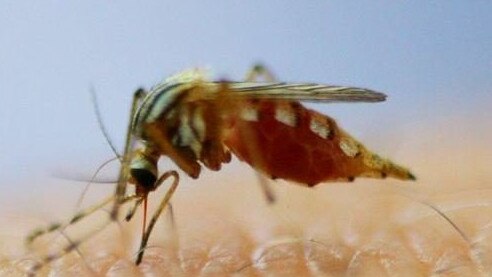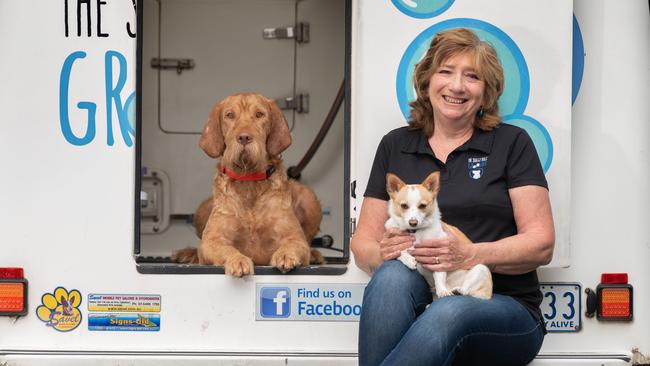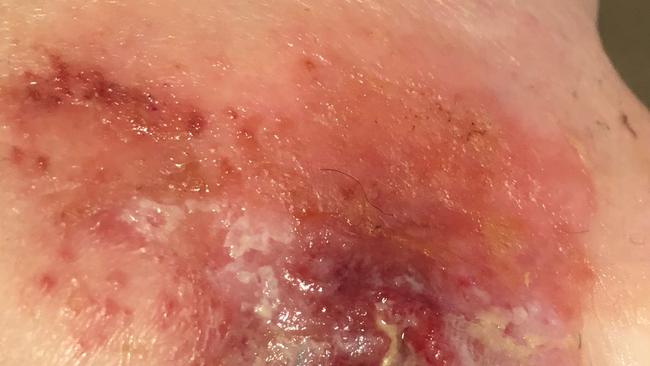Homeowners relocating pesky possums are spreading a flesh-eating ulcer into Melbourne
Homeowners relocating pesky possums to blame for a flesh-eating disease spreading to Brunswick, Essendon and Moonee Ponds.

News
Don't miss out on the headlines from News. Followed categories will be added to My News.
Victorians “should be worried” about the relentless march of the flesh-eating Buruli ulcer through the State and into Melbourne, health experts say.
Carried by infected possums and spread by mosquitoes, the bug was definitely on the move.
And people trapping and relocating possums – or transporting their droppings on shoes or car tyres – could be to blame.
Doherty Institute microbiologist and Buruli ulcer expert Professor Tim Stinear said Melburnians were right to be concerned cases had been discovered in Essendon, Moonee Ponds and Brunswick West.
The disease had previously been found in coastal areas like Bairnsdale, Phillip Island, the Bellarine and Mornington peninsulas, Surf Coast, Geelong and Frankston.
“We do know that it is moving and appearing in new places . . . Should we be worried? I think we should. I think there is a concern. What’s to stop it moving around, Melbourne? I don’t think there’s much, other than just opportunity and random chance,” Prof Stinear said.
“Wherever you’ve got highs number of humans, high numbers of mosquitoes and high numbers of possums that are infected with the bacteria, you’ve got the opportunity for the disease to spread.”

Executive director of communicable diseases with Victoria’s health department, Dr Bruce Bolam, said there was “a big delay” between people getting infected, developing a sore, seeking medical treatment and then being diagnosed, so that number would likely grow, he said.
If the disease was not picked up and treated in its early stages, it could progress to “a very significant and life-changing infection”, Dr Bolam warned.
“Obviously, it’s of concern,” he said, adding a research trial was being carried out on the Mornington Peninsula to see if residents setting mosquito traps, removing potential breeding grounds in their backyards and covering up to avoid being bitten, would reduce cases.
Prof Stinear said possums could carry the Buruli bacteria in their gut and shed it in their poo.
Like humans, they developed unsightly sores which grew bigger as the bug ate away flesh.
There had been reports of people trapping and moving possums to other areas, which could be spreading the Buruli (or Bairnsdale) ulcer, he said.
“When people unintentionally or illegally move wildlife around that are carrying the bacteria, they could introduce it to new areas,” Prof Stinear said.

Mozzies were likely also playing a role in the spread, either by breeding in places that possum poo was common – like roof gutters and drains - by feeding on possums and then humans, or by puncturing human skin with bites, enabling infected possum faeces or soil to get in.
“But the nitty gritty of how the bacteria gets from the possum to the mosquito is not well understood,” Prof Stinear said.
CSIRO infectious diseases expert Dr Kim Blasdell said research had shown sandy soil could also be a factor, combining with possums and mosquitoes to create the perfect environment for Buruli ulcer.
But the good news was, in addition to effective antibiotic and surgical treatments for the disease, there had been trials of a tuberculosis vaccine in mice which had shown promise in preventing development of Buruli ulcer.
The bacteria that caused TB was “closely related” to Buruli and the idea had been floated of vaccinating possums against the disease, by somehow baiting their food sources with an oral TB vaccine, Dr Blasdell said.
“I’m not saying that’s the answer but I think it’s something we should explore,” she said.
Dr Bolam said using heavy-duty insect repellent and covering up when visiting mozzie-prone areas - and getting rid of any pools of stagnant water around the home - were the first lines of defence against the disease.

MY ULCER HORROR: MELBOURNE WOMAN TELLS
Gabrielle Collins suspects her “horrendously agonising” year-long battle with Buruli ulcer started with a mozzie bite to the ankle, while camping by the shores of East Gippsland’s Lake Tyers.
That was in January 2019, but it was another five months until the pain set in and the Diamond Creek dog groomer sought the help of Melbourne doctors.
For months, nobody tested for Buruli, or Bairnsdale, ulcer.
When the sore eventually “erupted”, Ms Collins says she suffered through the worst, most relentless pain of her life.
“The reason they call it ‘flesh eating’ is because it works its way from the inside to the outside,” she said.
It was not until early-August that she was finally diagnosed with Buruli ulcer and started treatment.

“It was the most excruciating time of my life . . . at one point my foot was just a great big red mess of revoltingness .. . it was just horrific . . . it wasn’t until January 2020 that I could finally wear a pair of shoes,” Ms Collins said.
Surgery and heavy-duty antibiotics have cleared the bug and she is now healthy but is vigilant in avoiding mozzie bites.
“When we went back (to Lake Tyers) again I was quite paranoid - I wore socks up to my knees every night.”
WHAT YOU NEED TO KNOW
> Buruli or Bairnsdale ulcer is a bug causing bumps or blisters on the skin, often mistaken for insect bites. A flesh soredevelops over time.
> Toxins made by the bacteria destroy skin cells, small blood vessels and the fat under the skin, which causes skin loss.
> Most common in Victorian coastal areas, it is spread by possums, through their poo, and mozzies.
> To avoid it, remove stagnant water sources around the home, wear gloves and long-sleeved shirts and pants when working outdoorsand avoid mozzie bites with heavy-duty repellent.
> Promptly wash and cover any scratches or cuts you receive while working outdoors.
> See your doctor if you have a slow-healing skin lesion.
BURULI ON THE MARCH
1930s - First discovered in Bairnsdale, East Gippsland
Mid-1980s - Cases occur at the top of Western Port Bay.
Early 1990s - Phillip Island, Langwarrin and Frankston record cases
Late 1990s - Indented Head and St Leonard’s on the Bellarine Peninsula have infections
Early 2000s - Point Lonsdale, Ocean Grove and Barwon Heads on the other side of the Bellarine Peninsula become hot spots forthe disease
2010 to 2012 - Cases start popping up on the Mornington Peninsula, and the disease takes off, making the region the hottestspot for the bug
2019 - Geelong and the Surf Coast record cases
2021 - Melbourne has its first cases, with infections in Essendon, Moonee Ponds and Brunswick West.





